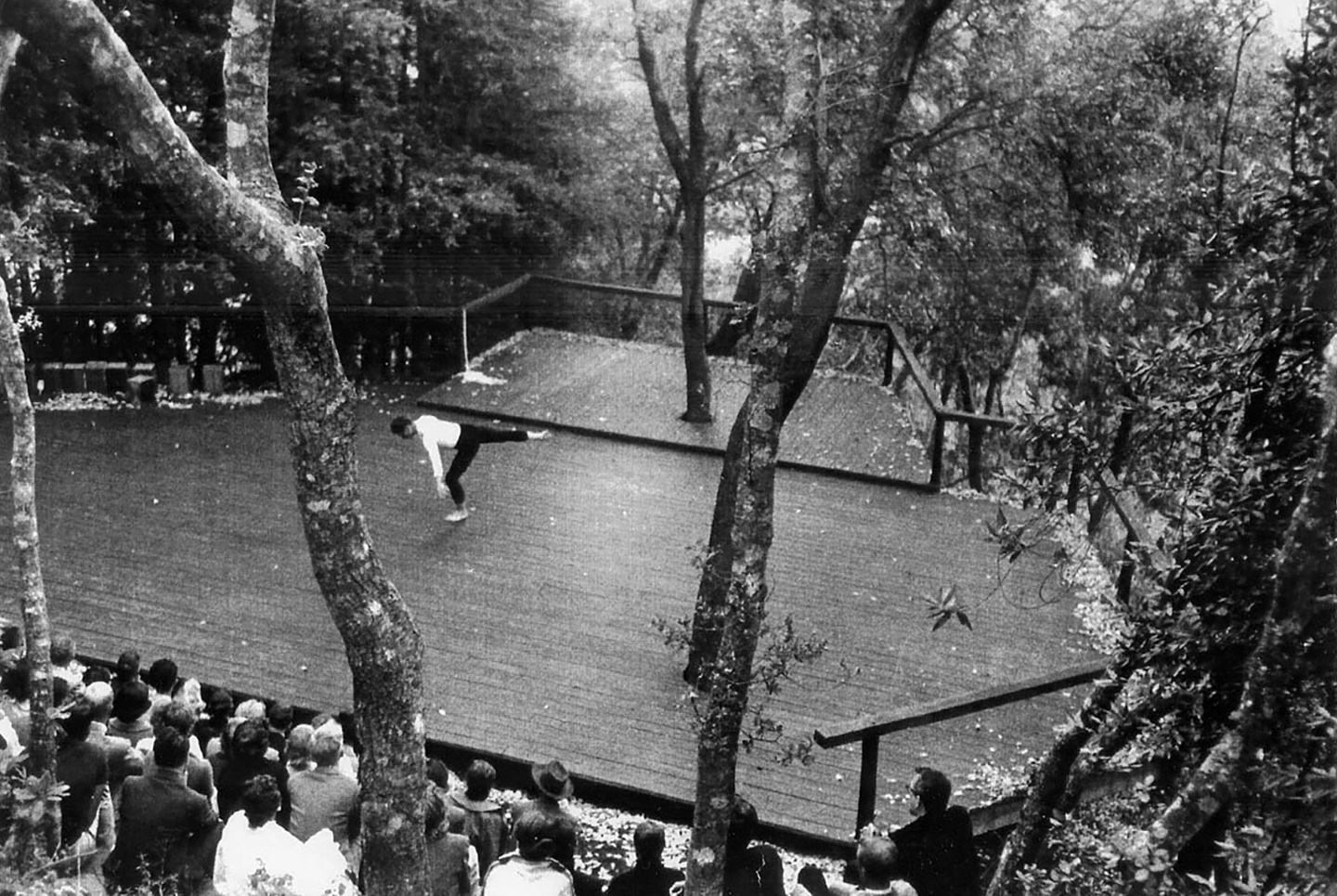Anna Halprin’s dance deck was built in collaboration with Lawrence, her husband, the landscape architect, urban designer, and ecologist, between 1953 and 1954, in the redwood area of Kentfield, California. From this site, Anna Halprin, born in 1920 in Illinois, has been developing innovative dance pieces and performing therapeutic movement rituals for more than sixty years. As she says, “I began to simply shed all of my old patterns, and I had to start anew with new ideas of what is the nature within me and how did that nature and my nature interface. That’s where I began to develop a new approach to movement.”
The Halprins’ dance deck presented a landscape score, establishing dance techniques based on observation and awareness. The “task performances,” in particular, were a means of attending to the conversation between one’s body and a specific environment. These exercises formed the basis for a range of collective acts, “movement rituals,” such as blindfolded walks, and workshops with students, including Trisha Brown, Simone Forti, and Yvonne Rainer. The kinesthetic experience and collectivity that this interstitial space offers can be traced back to the beginnings of modern dance.
When the dance deck was built, artistic collaboration was being rethought. Influenced by the Bauhaus—Halprin had met most of the original members at Harvard University in 1937—she organized workshops with a range of visual artists, composers, poets, architects, filmmakers, and dancers coming from the bourgeoning San Francisco art scene. Termed “instant theater,” it emphasized new ways of creating dance, involving direct input from her collaborators. The shift from choreography to collective creativity was in this respect a decisive turning point. Formalized by Lawrence in 1968, the “RSVP” feedback loop describes this creative process; it involves four components: an assessment of resources (R); scoring (S); valuaction, an evaluation of the work based on values (V); and performance (P). As a response to the Watts riots in Los Angeles in 1965, for example, Halprin created a multiracial U.S. dance company, nearly unprecedented, in which the RSVP cycle provided a method for each community to be seen and heard in its own terms. She went on to work with other racial, sexual, and local minorities (consider Male and Female Rituals, 1978), as well as with HIV-positive people (Circle the Earth: Dancing with Life on the Line, 1989). On the dance deck, Halprin continues to develop her approach to movement and conducts a weekly performance lab where multidisciplinary artists share their original scores, before taking them to the streets and into other public spaces.
—Pierre Bal-Blanc and Lou Forster




